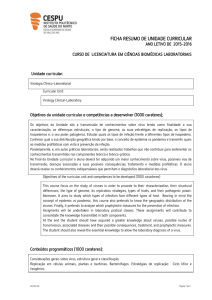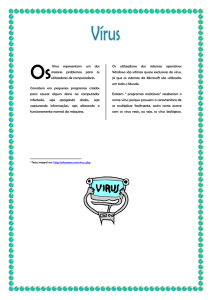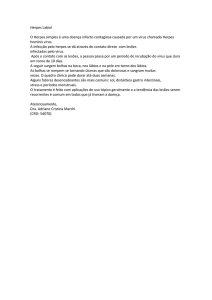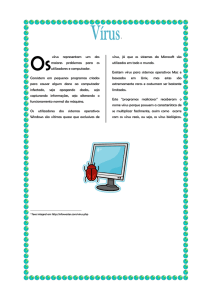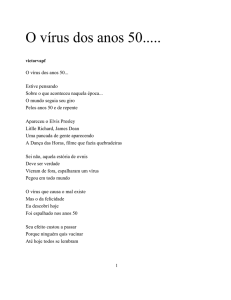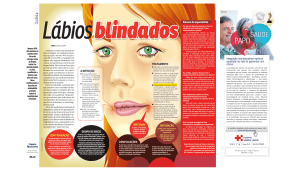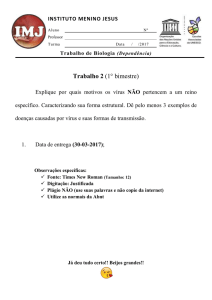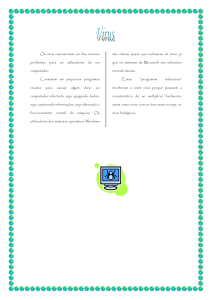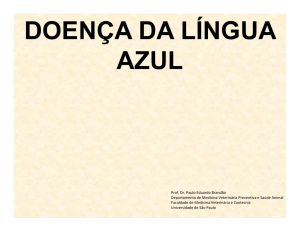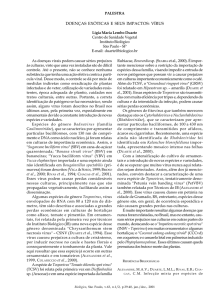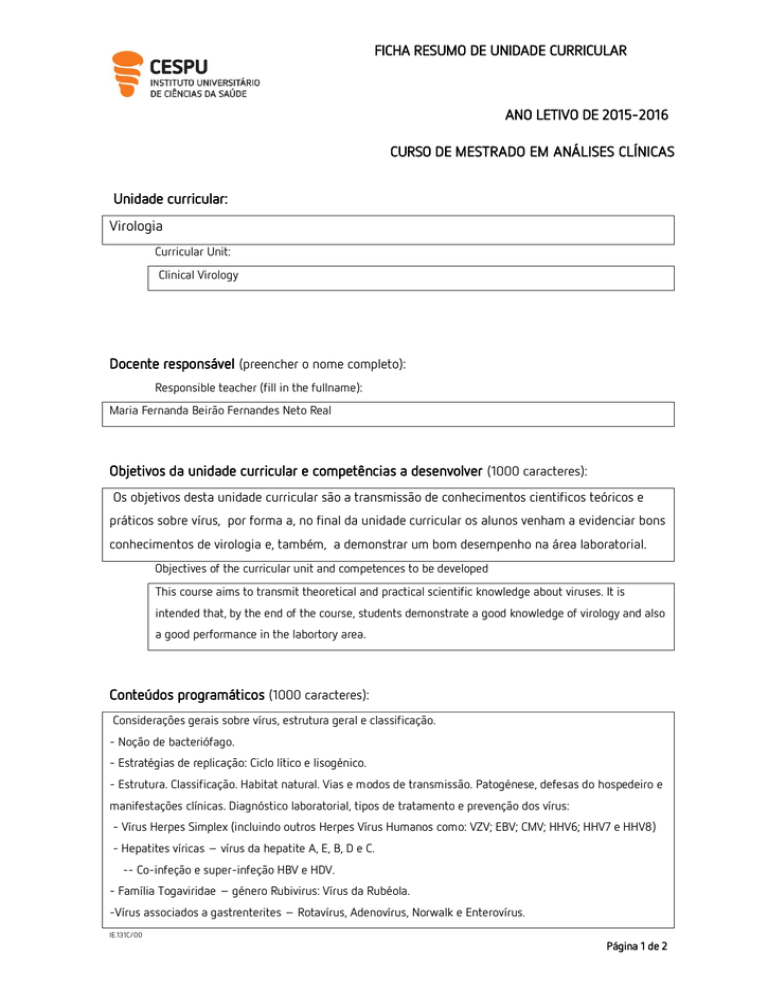
FICHA RESUMO DE UNIDADE CURRICULAR
ANO LETIVO DE 2015-2016
CURSO DE MESTRADO EM ANÁLISES CLÍNICAS
Unidade curricular:
Virologia
Curricular Unit:
Clinical Virology
Docente responsável (preencher o nome completo):
Responsible teacher (fill in the fullname):
Maria Fernanda Beirão Fernandes Neto Real
Objetivos da unidade curricular e competências a desenvolver (1000 caracteres):
Os objetivos desta unidade curricular são a transmissão de conhecimentos cientificos teóricos e
práticos sobre vírus, por forma a, no final da unidade curricular os alunos venham a evidenciar bons
conhecimentos de virologia e, também, a demonstrar um bom desempenho na área laboratorial.
Objectives of the curricular unit and competences to be developed
This course aims to transmit theoretical and practical scientific knowledge about viruses. It is
intended that, by the end of the course, students demonstrate a good knowledge of virology and also
a good performance in the labortory area.
Conteúdos programáticos (1000 caracteres):
Considerações gerais sobre vírus, estrutura geral e classificação.
- Noção de bacteriófago.
- Estratégias de replicação: Ciclo lítico e lisogénico.
- Estrutura. Classificação. Habitat natural. Vias e modos de transmissão. Patogénese, defesas do hospedeiro e
manifestações clínicas. Diagnóstico laboratorial, tipos de tratamento e prevenção dos vírus:
- Vírus Herpes Simplex (incluindo outros Herpes Vírus Humanos como: VZV; EBV; CMV; HHV6; HHV7 e HHV8)
- Hepatites víricas – vírus da hepatite A, E, B, D e C.
-- Co-infeção e super-infeção HBV e HDV.
- Família Togaviridae – género Rubivirus: Vírus da Rubéola.
-Vírus associados a gastrenterites – Rotavírus, Adenovírus, Norwalk e Enterovírus.
IE.131C/00
Página 1 de 2
FICHA RESUMO DE UNIDADE CURRICULAR
- Enterovirus C (serotipo PV-1, PV-2 e PV-3) vs diferentes tipos de poliomielite
- Família Retroviridae
-- HTLV 1 e 2. Papel oncogénico no Homem
-- HIV 1 e 2 (vírus da imunodeficiência humana)
- Papovavírus (gén. Papilomavirus e Poliomavirus)
- Vírus associados a doença Hemorrágica
Syllabus
General considerations about virus, general structure and classification.
- Notion of bacteriophage.
- Strategies replication: lytic and lysogenic cycle.
- Structure. Rating. Natural habitat. Routes and modes of transmission. Pathogenesis, host defenses
and clinical manifestations. Laboratory diagnosis, treatment and prevention of types of viruses:
- Herpes Simplex Virus (Human Herpes Virus including other as VZV, EBV, CMV, HHV6, HHV7 and
HHV8)
- Viral hepatitis - hepatitis A, E, B, D and C
- Co-infection and super-infection HBV and HDV.
- Togaviridae Family - genus Rubivirus: Rubella Virus.
- Viruses associated with gastroenteritis: Rotavirus, Adenovirus, Enterovirus and Norwalk.
Enterovirus C (serotyp PV-1, PV-2 e PV-3) versus different types of poliomyelitis
- Family Retroviridae
- HTLV 1 and 2. Oncogenic role on Man
- HIV 1 and 2 (Human Immunodeficiency Virus)
- Papovavirus (gender Papillomavirus and Polyomavirus)
- Hemorrhagic virus
Referências bibliográficas (bibliography)
(máximo três títulos):
- Alan Cann. 2005. Principles of Molecular Virology. 4 th Edition. Elsevier Academic Press.
- Fields, Knipe, Howley P. 2007. Fields Virology. 5th Edition (vol 1 and 2), Lippincott-Raven Pub.
- Jawetz, Melnick & Adelberg. 2002. Microbiologia Médica. 22th Edition. MC Graw Hill.
O regente: (data e nome completo):
IE.131C/00
Página 2 de 2

